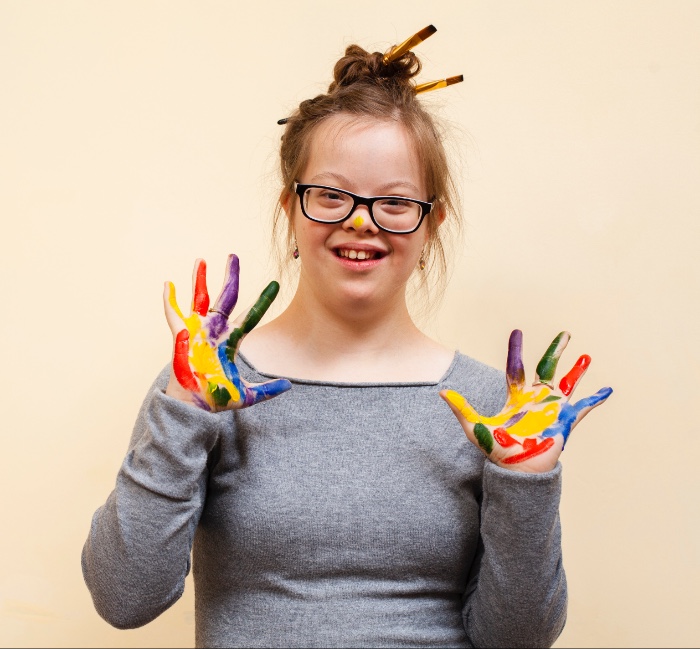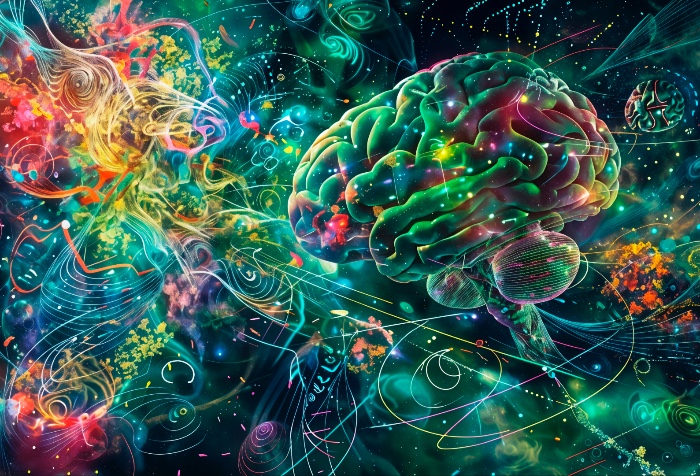Understanding and Supporting Diverse Neurological Profiles from Childhood to Adulthood
Neurodiversity is a term that’s increasingly used in education, therapy, healthcare, and the workplace—but what does it actually mean? In essence, neurodiversity refers to the natural differences in how people's brains work. These differences can affect how individuals think, learn, communicate, and behave. The term challenges the idea that there is one “normal” or “correct” way for a brain to function.
This factsheet introduces the concept of neurodiversity, where the term came from, and the types of conditions it includes—such as autism, ADHD, and PDA. We also look at how you might recognise whether someone is neurodivergent, and explore the wide spectrum of behaviours and traits that fall under this umbrella.
Finally, we reflect on how to use the term respectfully and accurately, and how neurodiversity relates (and doesn’t relate) to mental health issues. While the two can overlap, they are not the same. Understanding this distinction is important in supporting individuals in a meaningful and inclusive way.
Neurodevelopmental Differences
One way to understand the meaning of neurodiversity is to break the word into two parts: 'neuron' and 'diversity'. Neurons are the building blocks of the brain and nervous system. They are responsible for transmitting information throughout the body and play a key role in how we think, move, feel, and respond to the world around us.
In neurodivergent individuals, the development and functioning of neurons may differ from what is considered typical. Rather than describing these neurons as malformed, which can sound stigmatising or incorrect, it’s more accurate to say that they are wired differently. These differences can affect how the brain processes information, responds to sensory input, regulates emotions, or communicates with others. This is what we mean when we talk about neurodevelopmental diversity.
There are many reasons why brain development might follow a different path. Genetics, prenatal environments, birth complications, or early life experiences can all influence the way a person’s brain develops. These differences are not necessarily “problems” to be fixed, but rather variations in the human experience.
Conditions Considered Neurodivergent
Neurodevelopmental differences can lead to a range of neurological conditions, including:
Neurodevelopmental Conditions
-
Dyslexia (reading)
-
Dyscalculia (math)
-
Dysgraphia (writing)
-
Developmental Coordination Disorder (DCD) / Dyspraxia
-
Language Processing Disorder
-
Auditory Processing Disorder (APD)
-
Borderline Personality Disorder (BPD)
Mental Health Conditions (sometimes included under neurodivergence)
-
Obsessive Compulsive Disorder (OCD)
-
Generalised Anxiety Disorder (GAD) (context-dependent)
-
Depression (context-dependent)
Genetic/Neurological Conditions (sometimes included)
-
Epilepsy (when it affects cognition/processing)
Related Concepts
-
Pathological Demand Avoidance (PDA) (considered a profile of autism by some)
-
Sensory Processing Disorder (SPD) (not a standalone diagnosis in DSM-5 but often co-occurs)
Each of these affects individuals differently, depending on how the brain is wired and how that wiring interacts with their environment.

Many of these conditions are described as spectrum disorders, which means they can vary widely in how they present. For example, one person with autism may be non-verbal and need high levels of support, while another may be highly verbal but find social situations overwhelming. This spectrum concept highlights that neurodiversity is not a fixed point, but a broad and varied landscape.
Understanding neurodevelopmental brain differences helps us appreciate that every brain is unique. Some people may process information quickly, others slowly. Some may need structure, while others thrive with freedom.
While neurodiversity includes conditions such as autism, ADHD, and PDA, it’s important to understand that the concept of neurodiversity is not limited to medical diagnoses. A person may be diagnosed with a neurodevelopmental condition and be considered neurodivergent—but the two terms are not mutually exclusive or interchangeable.
Neurodiversity is a broader social and biological concept that recognises the natural variation in how human brains function. Diagnosis, on the other hand, is a clinical process used to identify specific patterns of behaviour, traits, or challenges.
In other words, someone with a diagnosis of autism is neurodivergent, but not all neurodivergent individuals necessarily have—or need—a formal diagnosis to be recognised as such.
Where Did the Term "Neurodiversity" Come From?
The term neurodiversity was first coined in the late 1990s by Australian sociologist Judy Singer, who is herself a member of the autistic community. She introduced the word in her honours thesis to describe the idea that neurological differences—like autism—are part of natural human variation, not just medical conditions to be treated or cured.
At the time, most discussions around autism and similar conditions focused on deficits, disorders, and what people couldn’t do. The term neurodiversity offered a new, more inclusive way of thinking. It reframed the conversation around difference rather than dysfunction, allowing individuals to be seen for their strengths and unique perspectives as well as their challenges.
The concept quickly gained traction, especially within the autistic self-advocacy movement. It has since expanded to include a wide range of conditions, including ADHD, dyslexia, dyspraxia, Tourette syndrome, and others. In recent years, the term has become more common in education, employment, and healthcare as society recognises the importance of supporting people with different ways of thinking, learning, and processing the world.
Neurodiversity has become a popular and useful term because it shifts the focus from what’s “wrong” to what’s different—and how those differences can be accepted, accommodated and celebrated.

Autism and Neurodiversity
Autism is one of the most well-known and widely discussed examples of neurodiversity. In fact, when many people hear the word neurodiversity, they often think first of autistic people. While the concept of neurodiversity includes many different conditions and traits, autism has become closely linked with the term—perhaps because the neurodiversity movement was originally championed by autistic adults and self-advocates.
Autism, or Autism Spectrum Disorder (ASD), is a neurodevelopmental condition that affects how a person perceives the world, communicates, and relates to others. It is described as a spectrum because it can present in many different ways and with varying levels of impact on daily life. Some autistic people may require high levels of support, while others may live independently and thrive in their personal and professional lives.
Autistic Traits
Common autistic traits include:
-
A preference for routine and predictability
-
Intense focus on specific interests
-
Differences in social communication and interaction
-
Sensory sensitivities (e.g. to noise, light, textures)
-
Difficulty understanding or expressing emotions in expected ways
It’s important to remember that these traits are not exclusive to people with an autism diagnosis. Many people—especially adults—may recognise aspects of themselves in these traits. For example, someone who finds social events feel overwhelming, or who relies on routines for emotional stability, might describe themselves as having autistic traitswithout having (or needing) a formal diagnosis.
In recent years, it has become more common in life and on social media to observe neurodivergent people say things like “I’m a bit neurodiverse” or “I have some neurodivergent traits.” While this language can be helpful in acknowledging the broad spectrum of brain differences, it's worth using these terms carefully and respectfully. Being a bit neurodiverse isn’t a diagnosis—but it may reflect a growing recognition that neurological differences exist on a continuum.
Many successful and highly creative individuals identify as autistic. Autistic adults can bring unique strengths to the workplace, including attention to detail, deep expertise, honesty, and creative problem-solving. Increasingly, employers and educators are recognising the value of these strengths and making adjustments to better support a neurodivergent person.
While autism is a key part of the neurodiversity conversation, it’s just one example of natural diversity. Neurodiversity also includes attention deficit hyperactivity disorder (ADHD), dyslexia, dyspraxia, Tourette syndrome, and more. Recognising the breadth of neurodiversity helps us build a more inclusive understanding of the many ways human brains work—and how we can support people to thrive.
Recognising Neurodiversity: Diagnosis, Self-Identification, and Support
As awareness of neurodiversity has grown, so has the number of people who self-identify as neurodivergent. For some, this is based on recognising autistic traits, sensory sensitivities, or patterns of thinking that differ from the neurotypical majority. While self-reflection and self-awareness are valuable, it's important to recognise the difference between self-identifying and having a formal diagnosis made by medical professionals.
Diagnosis can help clarify needs and access appropriate support, particularly in schools and workplaces. However, some individuals may face long waiting lists, cost barriers, or simply choose not to pursue a diagnosis—especially adults who have found their own ways of managing. The key is to approach neurodiversity with openness, but also with care and responsibility. Being neurodivergent is not about fitting a label; it’s about understanding how someone’s brain works and what support helps them thrive.
This leads us to an important point: whether someone has a diagnosis or not, there are often clear and simple ways to support them, or indeed yourself, especially in environments like home, school, and the workplace.
Reasonable Adjustments for Neurodiversity at Home, School and in the Workplace
Neurodivergent individuals often benefit from practical, thoughtful adjustments to their environment that reduce stress and support learning, communication, or productivity. These reasonable adjustments can be easy to implement and can make a significant difference.
In schools, for example, neurodivergent students may need:
-
Quiet spaces for breaks
-
Access to noise cancelling headphones to reduce sensory overload
-
Visual timetables or structured routines
-
Flexible approaches to assessment or participation
In the workplace, adjustments might include:
-
Clear written instructions
-
Quiet working areas or hybrid/remote options
-
Allowing the use of noise cancelling headphones
-
More predictable routines and fewer last-minute changes
-
Understanding that eye contact, small talk, or group meetings may cause discomfort
At home, creating calm, structured environments and allowing space for interests, routines, and self-regulation strategies can help support both children and adults who are neurodivergent.
It’s also important to understand how learning disabilities differ from neurodivergence. Learning disabilities usually refer to difficulties with intellectual functioning and adaptive behaviour. While learning disabilities can co-occur with neurodevelopmental conditions like autism or ADHD, not all learning disabilities are part of what is described under the umbrella term neurodiversity. And not all neurodivergent people have learning disabilities.
Reasonable adjustments aren’t about giving special treatment—they’re about creating equity. By recognising and responding to the needs of neurodivergent people, we make our homes, schools, and workplaces more inclusive for everyone.

Are Learning Disabilities Part of Neurodiversity?
As we have learned, the term neurodiversity refers to the natural variation in how brains are wired and how people think, process, learn, and behave. It typically includes neurodevelopmental conditions like autism, ADHD, dyslexia, dyspraxia, and Tourette syndrome.
Learning disabilities, however, are usually defined differently—particularly in the UK. A learning disability refers to a significant, lifelong impairment of intellectual functioning and adaptive behaviour. It affects a person’s ability to understand information, learn new skills, and live independently. Common examples include conditions like Down syndrome or global developmental delay.
So why aren’t all learning disabilities automatically considered part of the neurodiversity movement?
-
The concept of neurodiversity originated as a way to reframe differences like autism and ADHD not as deficits, but as variations in human cognition—often with strengths as well as challenges.
-
Learning disabilities, on the other hand, are typically understood as medical diagnoses that result in substantial cognitive impairment. These may require different kinds of lifelong support.
That said, some people with learning disabilities are also neurodivergent, and there is certainly overlap. For example, someone might have both a learning disability and be autistic.
In more recent years, the neurodiversity umbrella has widened, and some advocates do include learning disabilities within the conversation, especially when discussing inclusion and accessibility. But not everyone agrees, and definitions can vary by country and context.
The key takeaway: neurodiversity and learning disabilities are not the same thing, but they can co-exist—and both deserve understanding, respect, and appropriate support.
Neurodiversity in Cognitive Science: Evolving Research and Understanding
Cognitive science is increasingly embracing the concept of neurodiversity, recognising that variations in brain function are natural and valuable aspects of human diversity. This shift moves away from viewing conditions like autism and ADHD solely as deficits, instead focusing on understanding the unique cognitive profiles and strengths of neurodivergent individuals.
Advancements in Neuroimaging and Brain Connectivity
Recent studies have utilised advanced neuroimaging techniques to explore the neural underpinnings of neurodivergent conditions. For instance, researchers have developed models to assess brain connectivity patterns in individuals with autism, providing insights into the heterogeneity of the condition and aiding in more personalised approaches to diagnosis and intervention .arXiv
Genetic Research and Neurodevelopmental Conditions
Genetic studies have identified specific genes associated with neurodevelopmental conditions. A notable discovery is the link between the DDX53 gene and autism, which may help explain the higher prevalence of autism in males . Such findings contribute to a deeper understanding of the biological factors influencing neurodivergence. New York Post
Integrating Neurodivergent Perspectives
There's a growing emphasis on involving neurodivergent individuals in research to ensure that studies reflect their experiences and needs. This inclusive approach aims to develop more accurate theories and interventions that resonate with the neurodivergent community .PMC
Educational and Workplace Implications
Understanding neurodiversity has significant implications for education and employment. Recognising the unique strengths of neurodivergent individuals can lead to more inclusive practices, such as tailored learning strategies and workplace accommodations, fostering environments where diverse cognitive styles are valued and supported.
How Do You Know if You Are Neurodivergent?
This is a question many people ask themselves—especially after recognising traits in themselves that are often associated with conditions like autism, ADHD, or sensory processing differences. You might wonder why certain social situations exhaust you, why you thrive on routine, or why you experience the world in a more intense or detailed way. These experiences can feel isolating until you realise others share them too.
Some individuals come to identify as neurodivergent later in life, based on their personal experiences and the validation they receive from others with similar traits. For clarity or support, many people pursue a formal diagnosis through a psychologist, psychiatrist, or paediatrician. Others begin with self-assessment tools or find connection and insight through peer communities, which can be equally meaningful in understanding their neurodivergent identity.
The truth is, all human biology is diverse. Our brains, like our bodies, develop differently. There is no single “correct” way to think, learn, or feel. What society expects as “normal” is often just an average—not a rule.
Instead of asking, am I neurodiverse in a clinical sense?, it can be more helpful to ask:
What do I need to feel safe, focused, calm, and understood?
Each person is on their own developmental journey. Some will meet criteria for a formal diagnosis such as autism or ADHD. Others may recognise autistic traits or other forms of neurodivergence in themselves but never receive a label. That’s okay.
Whether or not you identify as neurodivergent, it’s important to listen to yourself. Your preferences, sensitivities, and strengths are valid. What matters most is understanding how your brain works best—and building a life around that.
Should I Seek a Diagnosis?
Seeking a formal diagnosis can be helpful, especially if you're struggling in areas like work, school, relationships, or daily functioning. A diagnosis can open doors to support, reasonable adjustments, and services. It can also offer a sense of clarity and self-understanding.
However, it’s a personal choice. Some people find validation and community without a formal label. Others face long waiting times or choose not to go through the diagnostic process.
There’s no right or wrong answer. The most important thing is to learn about yourself—and to treat that process with kindness and curiosity, not judgement.
Supporting Yourself and Others
Taking care of your mental health and emotional well-being is vital for everyone, regardless of labels or diagnoses. Here are a few strategies that can support well-being and self-regulation:
-
Breathing exercises – Slowing down your breath can help calm the nervous system and reduce anxiety.
-
Journalling – Writing your thoughts, feelings, and experiences can help you process them and spot patterns.
-
Movement – Gentle stretching, walking, or regular exercise can improve mood and focus.
-
Sensory regulation – Use tools that soothe or focus you (e.g. noise cancelling headphones, fidget items, soft lighting).
-
Routine and structure – Some people feel calmer with predictability. Experiment to see what works for you.
-
Connection – Talking to someone you trust or finding a supportive community can be invaluable.
-
Creative outlets – Art, music, cooking, or crafting can help express emotion and bring joy.
It’s very likely that most people display some neurodivergent traits—it’s just part of being human. Human experience exists on a spectrum, and no two brains are exactly the same.
The key is to observe how you feel, notice what affects your energy or focus, and find what works for you.
Using the Terms “Neurodivergent” and “Neurodiversity” Respectfully
The term "neurodivergent" is best used to describe an individual (e.g., “a neurodivergent person”), while "neurodiversity" refers to the concept as a whole (e.g., “supporting neurodiversity in schools”). It’s important to listen to how people choose to self-identify—some prefer identity-first language (e.g., “autistic person”), while others may prefer person-first language (e.g., “person with autism”).
When using these terms, avoid oversimplifying or romanticising neurodivergence. While many neurodivergent people have unique strengths, others face significant barriers and challenges. It's also important not to use the language of neurodiversity to overlook individual needs or skip essential supports and accommodations.
Issues and Considerations
There are ongoing debates about how neurodivergence is framed—some people advocate for a purely strengths-based, social model, while others emphasise the need for medical support and recognition of the challenges involved. The distinction between self-identification and formal diagnosis can be controversial, especially when services or support depend on clinical validation.
Language preferences continue to evolve and vary between communities, cultures, and individuals. In addition, not everyone has equal access to diagnostic assessments, creating disparities in who gets recognised and supported as neurodivergent.
Conclusion
Neurodiversity reminds us that there is no one-size-fits-all when it comes to the human brain. The way we think, feel, learn, and relate to the world varies naturally from person to person. Whether someone has a formal diagnosis or simply identifies with certain traits, the idea of neurodiversity helps shift our focus from labels and limitations to understanding and support.
We are all shaped by our unique biology, experiences, and environments. Rather than asking whether we “fit” a particular category, it can be more helpful to ask: what do I need to thrive—and how can I help others do the same?
Recognising and respecting neurodivergence is not just about individual needs; it’s about creating more inclusive homes, schools, workplaces, and communities. By making space for difference, we make space for everyone.
No two brains are alike—and that’s something worth celebrating.
